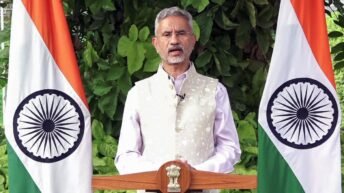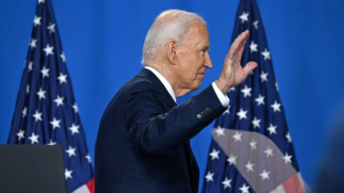|
Listen to article
Getting your Trinity Audio player ready...
|

Ayushman Bharat- Pradhan Mantri Jan Arogya Yojana has been silently and steadily providing healthcare benefits to lakhs of Indian families in a pandemic-stricken world.
Keywords: Healthcare Policy | Ayushman Bharat- Pradhan Mantri Jan Arogya Yojana (AB-PMJAY) | Health and Wellness Centres | Swasth Bharat | Centre-State Cooperation | Migrants
Since ages, Indian philosophy has propounded the idea of Aarogyam Dhansampada, that health is wealth. The COVID-19 pandemic has once again reminded us to make health an everyday priority. It is also a wake-up call to governments across the world and especially for developing countries like India, to prioritise improving their respective healthcare systems to meet such unforeseen health challenges in future. In the Indian context as the battle with the pandemic continues, an important scheme that has silently helped heal and save lives is the Ayushman Bharat- Pradhan Mantri Jan Arogya Yojana (AB-PMJAY).
The AB-PMJAY provides 10.71 crore vulnerable identified families (approximately 50 crore beneficiaries) a free comprehensive health cover of up to Rs. 5 lakhs per family per year, for secondary and tertiary care hospitalization.
This flagship scheme was launched in September 2018 by Prime Minister Modi with the aim to provide quality and affordable healthcare services accessible to poor families across India. The AB-PMJAY provides 10.71 crore vulnerable identified families (approximately 50 crore beneficiaries) a free comprehensive health cover of up to Rs. 5 lakhs per family per year, for secondary and tertiary care hospitalization. At the primary care level, Ayushman Bharat program aims to create 1,50,000 Health and Wellness Centres (HWCs) by upgrading the existing Sub Centres and Primary Health Centres by 2022. This makes the scheme the world’s largest government-funded healthcare program. The beneficiaries of this program are receiving free COVID-19 testing and treatment facilities at government as well as the empanelled private hospitals in addition to the 1,391 packages covered under the scheme.
At the primary care level, Ayushman Bharat program aims to create 1,50,000 Health and Wellness Centres (HWCs) by upgrading the existing Sub Centres and Primary Health Centres by 2022.
On 20th May, 2020 the AB-PMJAY reached a significant milestone of one crore cashless and free treatments, that too in a short span of just 20 months from the inception of the scheme. Prime Minister Modi highlighted the importance of this landmark achievement and how the scheme was a step towards creating Swasth Bharat. The cashless, paperless and most importantly all India portability features have made this scheme very effective, especially amidst the COVID19 pandemic.

Boon for migrants
The portability feature of AB-PMJAY has helped thousands of migrants to avail medical facilities during the ongoing pandemic.
The portability feature of AB-PMJAY has helped thousands of migrants to avail medical facilities during the ongoing pandemic. As shown above, there are over 14 lakh portability cases out of over 1 crore hospital admissions as on17 July, 2020. In spite of health being a state subject, the central government is providing major financial assistance to this program while running it in partnership with the state governments. While various state governments have state-specific health care schemes, they fall short in providing pan-India healthcare access to the migrants. Also, some states have an insurance cap of less than 5 lakh rupees. The AB-PMJAY has thus proved to be a boon for migrants because of the portability feature and higher cap. The National Health Authority (NHA) has also launched a campaign, ‘Swasthya ki Chaanv, Shehar ho ya Gaanv’, to reach out to migrants and to educate and empower them to make use of the free healthcare services under this scheme.


As of date, only a few states including West Bengal, Odisha and Telangana are not on board for this scheme. The earlier reluctant Delhi government has also signed an MoU for this scheme in the backdrop of the COVID-19 pandemic. If the remaining 3 states come on board, rising above their differences, the idea of One Nation One Health card will soon be materialized for the beneficiaries weaving India’s fragmented health system into a single mosaic.
Along with government agencies, civil society agents, NGOs, social activists, leaders etc. must make efforts to reach out to more at-risk families, inform them of the facilities and the details of the nearby empanelled public or private hospitals.
Going forward the list of beneficiaries identified for the scheme as per the Socio-Economic Caste Census 2011 needs a constant upgrade and cleaning up so that the most deserving vulnerable families get the benefits. Massive awareness programmes are required to cover more beneficiaries. As per the graph given above, over 12.5 crore health e-cards have been issued to date. Along with government agencies, civil society agents, NGOs, social activists, leaders etc. must make efforts to reach out to more at-risk families, inform them of the facilities and the details of the nearby empanelled public or private hospitals. The website https://mera.pmjay.gov.in/search/login must be used for the same.
There have been many attempts in the past to provide government-funded insurance schemes at the state and central level, but they haven’t been effective because of the lower insured amount, family size limits, lack of portability etc. The issue of bleeding out of pocket medical expenses which pushes lakhs of families into poverty every year has never been addressed holistically in India. The AB-PMJAY is an effort in this direction addressing the most acute limitations of earlier schemes. It has now set a strong foundation to make affordable comprehensive Universal Health Coverage a possibility for all citizens of India in the years to come. As the scheme progresses, we can expect more private hospitals to get empanelled and the cap of medical packages further revised to make it more effective.
The fulfilment of the promise of a New India necessitates a Swasth Bharat. The fault lines in India’s healthcare system, exposed by the pandemic, call for the centre and especially the state governments to allocate financial resources to rapidly scale up medical infrastructure. Ayushman Bharat program has already given the right push to health reforms which will also help the nation achieve UN’s Sustainable Development Goal 3, i.e. providing good health and well being for all.
Apart from being the pharmacy of the world (India is the world’s third-largest producer of drugs in terms of volume), India also has the potential to become the most important medical tourism destination for a large part of the world.
Apart from being the pharmacy of the world (India is the world’s third-largest producer of drugs in terms of volume), India also has the potential to become the most important medical tourism destination for a large part of the world. This can also provide a much-needed boost to India’s health diplomacy, a key tool for furthering India’s strategic interest in a dynamic world.
Winston Churchill once famously quipped, “Never let a good crisis go to waste ” The crisis of COVID19 is an opportune moment for India to rise up to the occasion and work towards a better healthcare system making India truly Ayushman.India recently became the 2nd largest PPE kit producing country in a short span of a few months. We need to emulate such synergies and success at every level of the health apparatus of the country and Ayushman Bharat scheme has provided the right spurt in that direction.
सर्वे भवन्तु सुखिनः सर्वे सन्तु निरामयाः। सर्वे भद्राणि पश्यन्तु मा कश्चिद्दुःखभाग् भवेत्।।
May all be prosperous and happy, May all be free from illness. May all see what is auspicious, May no one suffer.






very nice sir and productable for our